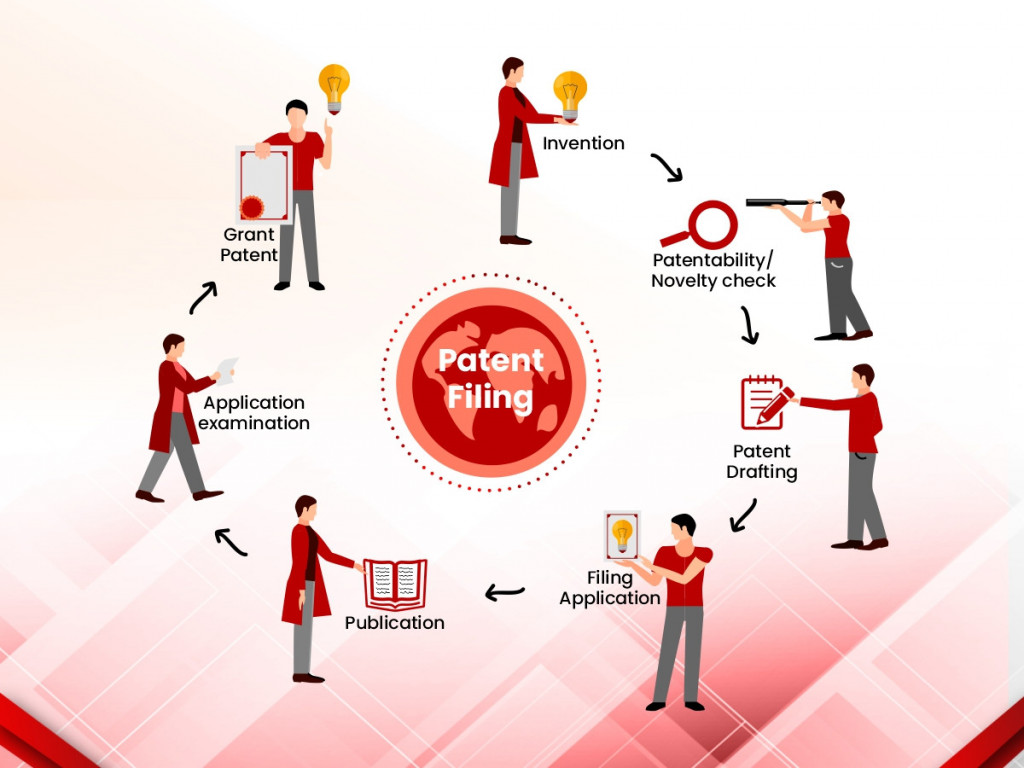Subscribe our newsletter
Please Subscribe our news letter and get update.

As an investor, you never want to hear these words – “Your patent application is rejected!!”
But somewhere around 30-40% of the filed patent applications get rejected even after a good amount of time and effort. Why? Mostly because of some error in patent drafting or Lack of Prior Art Research.
Filing a patent application is a complex process that includes several tasks requiring technical aspects to be kept in mind with ample scope for systematic errors which shows absolutely no mercy to your patent application.
That’s why we have come up with a checklist, that helps you ensure that your online as well as offline Patent Filing goes as smoothly as a racing car on the track. So, make sure you stay up here till the end.
Before even thinking about investing a penny in your patent application, you must, we mean “MUST” do thorough prior art research to ensure that your invention isn’t a known art already. For conducting a prior art search you can visit the websites of USPTO and WIPO, to search prior arts for your invention in their database. This can look time-consuming as well as laborious, but the results of the same will be equally fruitful. If you wish to you can outsource an IP service provider to conduct a prior art search because patent experts will know how to get the job done by keeping your needs in mind.
Once it has been confirmed that your invention can be patented. Get yourself the best patent attorney because an experienced attorney will help clear all inaccuracies that can either lead to rejection or delay in grant of your patent. Having a skilled attorney by your side can make your patent process smoother and more efficient. Also, Patent Filing involves legal as well as technical jargon which can be best decoded by a patent attorney.
There are 3 types of patents granted by the USPTO that are Utility patent, Design patent, and Plant patent. All these patents have their specific functions. According to your needs, you need to determine which patent you want to apply for as this will set the course for your patent filing.
Where do you want the rights of your invention to be decided by you? You need to answer the question do you need legal protection by patent law in the only US or the whole world? This answer will help you determine your filing strategy pattern. On which you will be working.
You must have heard about the early bird gets the worm, in the same way early filing gets the patent. US law grants patent protection based on the first-to-file patent system. This means one filing the patent first will get priority to get the patent over the one who came up with the invention first. That’s the reason why it is important to secure a priority date by filing a provisional patent application. This will give you not only a year to work further on your invention but also a priority date. But you must keep in mind that it becomes compulsory to file a non-provisional patent application within 12 months from that date.
Note: If you are already done with drafting of your patent, then you can directly opt for the non-provisional filing.
A patent draft is an intricate description of your invention that includes claims concerning the scope, consequences, abstract, background, drawings and a summary of your invention. Patent Draft needs to specify the legal scope of protection you seek, that is why drafting a patent is technical and a complex process. That’s why make sure that you enlist your patent attorney and industry experts to be a part of the filing process.
There is no specific enough number of times where you review your patent application. But, this step can be called the most crucial step as the smallest error can cost you your patent. That’s why you need to review your patent application more than once so that you can save yourself from heartbreak, and wastage precious time and funds. So, never think about skipping this step and get prepared to file the patent.
As you have submitted the documents, now you will be assigned an examiner by USPTO. To facilitate the filing process, you need to be constantly in touch with your patent examiner. Monitor any correspondence from the patent office carefully.
Remember that the USPTO will send any correspondence to your patent attorney if they applied on your behalf. It usually takes two to four years to get a patent from the filing date.
Businesses invest countless hours and dollars in the patent application process. Therefore, you must take all necessary steps to ensure that your patent application is strong enough to pass all scrutiny and be approved for a patent. It is also feasible to file a patent application by sending them via fax or mail, but one of the simplest ways to do this is through the USPTO website. There are abundant resources for online filing.
You can go through them and read them, then get registered as e-Filer. Now as you are a registered e-Filer, then you must make the best use of the Electronic Filing System (EFS) by USPTO to submit documents online for successive filing of the documents.
This was our 8-step checklist that will help you accomplish patent filing and drafting exactly the way you want. Wissen Research has successfully filed and got granted more than 150 patents. If you are looking for a patent attorney who can help you with Patent Filing, then Wissen Research can help you file your patent.
Please Subscribe our news letter and get update.
© Copyright 2024 – Wissen Research All Rights Reserved.